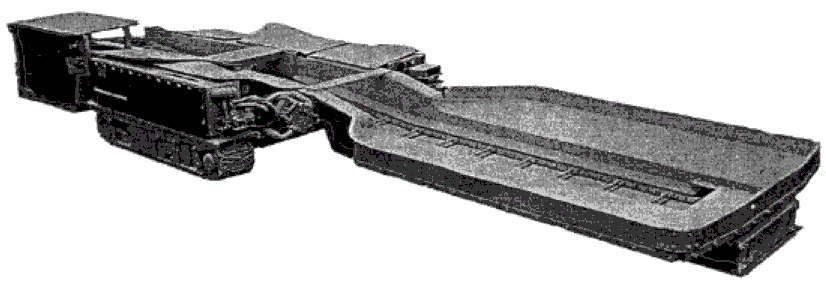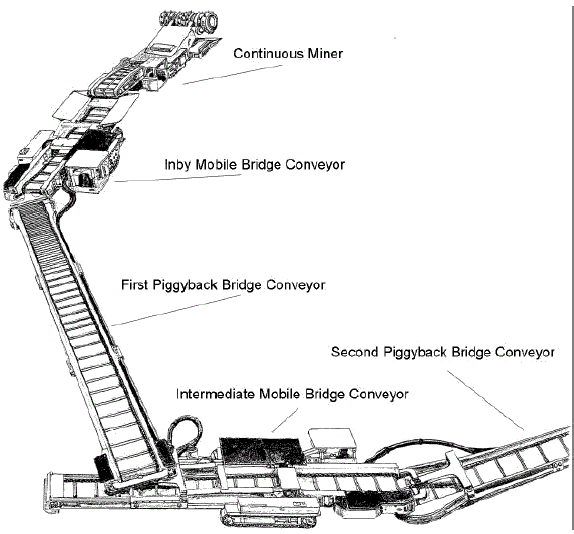
Figure 6.4 Inby Mobile Bridge Conveyor

Source: scholar.lib.vt.edu/
A new form of face haulage has been created and marketed by Long-Airdox.
This has evolved from a system that was conceived, initially, in 1958, but has undergone
constant updates and improvements since that time. Some of these improvements include
the introduction of custom designed dual, extended life conveyor chains and many others.
(Long-Airdox)
The system contains three main components that are utilized together to transport
the coal. These components include the inby mobile bridge carrier (Fig 6.4), the
intermediate mobile bridge carrier (Fig 6.5), and the piggyback bridge conveyor. (Fig
6.6) In a standard set-up as shown on Figure 6.7, the inby mobile bridge carrier is fed by
a continuous miner and dumps into the first piggyback bridge conveyor. This conveyor
dumps into the intermediate mobile bridge carrier, which off-loads into the second
piggyback bridge conveyor. This bridge conveyor empties onto the haulage belt of the
section. Currently all of the mobile bridge conveyors require operators. The flexibility of
the system allows the configuration to be adapted to specific layouts. (Long-Airdox)
This system has consistently set productivity and reliability records with over 125
installations operating across the country. These systems are used in seams ranging in
thickness from 30 inches to 13 feet. With haulage capacities of over 30 tons per minute
and tram rates up to 85 feet per minute this system will fill the haulage requirements of
the majority of continuous miner sections in operation. (Long-Airdox)
These systems are not yet fully automated but the design lends itself to
automation. The manufacturer is looking into automating this already versatile mining
tool.

Figure 6.4 Inby Mobile Bridge Conveyor

Figure 6.5 Intermediate Mobile Bridge Conveyor

Figure 6.6 Piggyback Bridge Conveyor (Long-Airdox) reproduced with permission

Figure 6.7 Assembled Continuous Haulage System (Long-Airdox) reproduced with permission